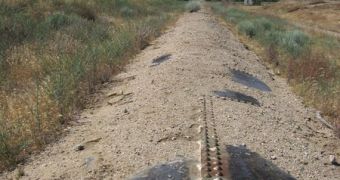The Canadian sandy oil reserves are the second largest in the world, after those that Saudi Arabia currently possesses. They mean less dependency on Middle Eastern oil for both the US and Canada, and they already supply refineries all around Chicago. But the bright side of these exploitations stops here. Besides this pretty picture, these oil deposits are the most damaging of them all, and they are able to cause enormous amounts of both pollution and greenhouse gases (GHG).
Instead of running freely in pipes, like regular crude, this type of oil is very tricky to extract. It's completely trapped in sand, resulting in a black, oily mixture that is very dense and a little viscous. Separating the usable oil from the dirt can only be done through complex procedures, involving the deforestation of large surfaces of boreal forests, as well as the creation of huge poisonous lakes, used to store the massive amounts of chemicals needed to separate the two. Some of these lakes can be seen from orbit.
In Canada, the debate over whether to use more of the resource or not rages on for quite some time now, with environmentalists and ecologists fighting top government officials and oil company executives. The latter use massive PR campaigns to advocate their idea, advertising the creation of thousands of workplaces and overall benefits for the economy, not to mention the royalties that the government will get out of closing such deals.
However, the impact on the environment is simply too great to go forward with even more exploitation, say critics to these endeavors. They cite the simple example of a flock of migratory ducks, 500 of them, who died moments after they landed on one of the poisonous lakes. And while officials say that the lakes must be cleaned by the companies and restored to their natural form, they also admit that "it does take a long time and it's a work in progress as we speak."
"It's a warning shot. This is a sign that the U.S. is starting to move toward caring about not spending taxpayer dollars on fuels that exacerbate global warming," argues Susan Casey-Lefkowitz, director of Natural Resources Defense Council program in Canada, while also praising the fact that the debate over the ethics of exploiting the 173 billion barrel deposit has moved to the US as well.

 14 DAY TRIAL //
14 DAY TRIAL //